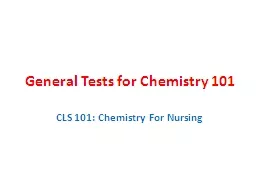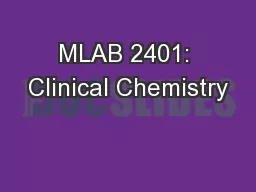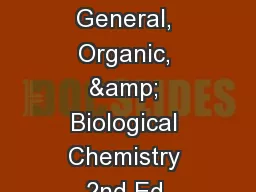PPT-General Tests for Chemistry 101
Author : tawny-fly | Published Date : 2018-02-16
CLS 101 Chemistry For Nursing Proteins Tests 1 Ninhydrin Test to Detect Amino Acids All amino acids with free αAmino group will react with ninhydrin to give
Presentation Embed Code
Download Presentation
Download Presentation The PPT/PDF document "General Tests for Chemistry 101" is the property of its rightful owner. Permission is granted to download and print the materials on this website for personal, non-commercial use only, and to display it on your personal computer provided you do not modify the materials and that you retain all copyright notices contained in the materials. By downloading content from our website, you accept the terms of this agreement.
General Tests for Chemistry 101: Transcript
Download Rules Of Document
"General Tests for Chemistry 101"The content belongs to its owner. You may download and print it for personal use, without modification, and keep all copyright notices. By downloading, you agree to these terms.
Related Documents








![[EPUB] - Sterling Test Prep DAT General Chemistry Practice Questions: High Yield DAT](https://thumbs.docslides.com/902879/epub-sterling-test-prep-dat-general-chemistry-practice-questions-high-yield-dat-general-chemistry-questions.jpg)
![[EPUB] - Sterling Test Prep DAT General Chemistry Practice Questions: High Yield DAT](https://thumbs.docslides.com/905615/epub-sterling-test-prep-dat-general-chemistry-practice-questions-high-yield-dat-general-chemistry-questions-61c0073213c62.jpg)




